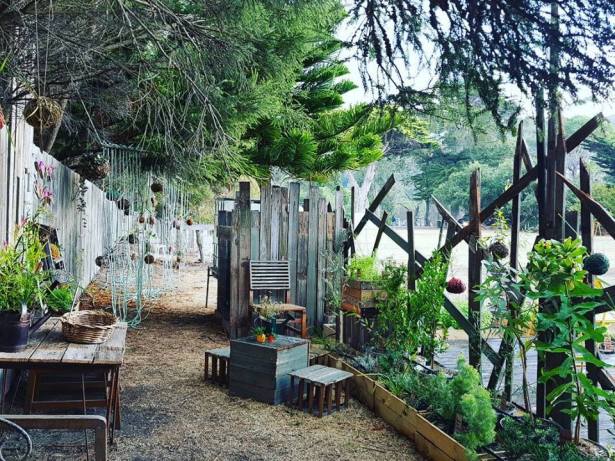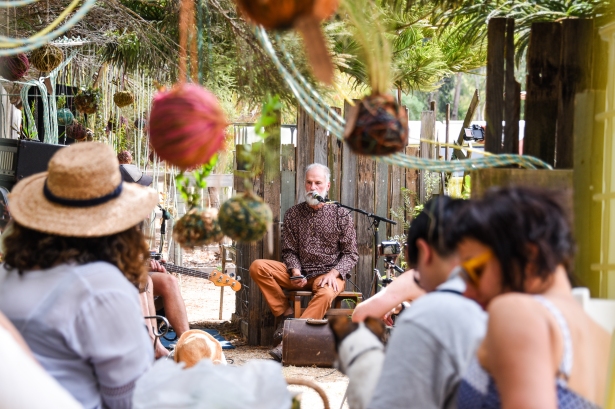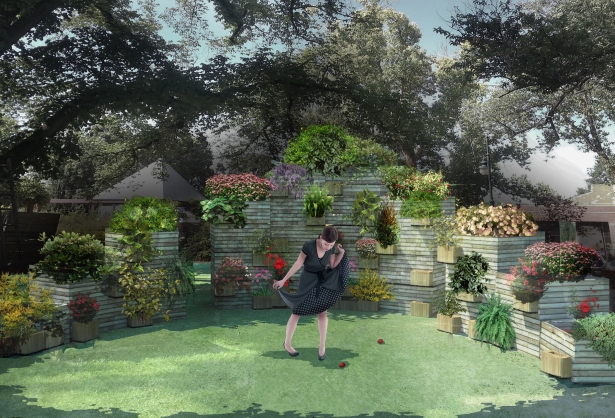By Amy Brady
What a month it’s been. Among all the political changes are the environmental ones. America’s Northwest (and Canada’s Southwest) continue to be engulfed in some of the largest wildfires in that area in recorded history. They are so large that their haze made it to New York City last week, making the sun look like a bright red spider bite.
But that’s nothing compared to what folks out west have been dealing with. Just look at some of these photos sent from my brother-in-law, who lives in the San Francisco area. They were taken two weeks ago at approximately eight o’clock in the morning.


The climate crisis is impossible to ignore.
And yet, so many voices – particularly those of women and BIPOC, the people who are impacted first and hardest by climate change – continue to go unheard. That’s why anthologies like All We Can Save, edited by Dr. Katharine K. Wilkinson and Dr. Ayana Elizabeth Johnson, are so important. This book features all women, who contributed essays, short stories, and poetry about the climate crisis. They come from a range of backgrounds, from the artistic to the scientific, and all of them write with urgency and power. In my interview with Katharine (Ayana was unable to participate because of time constraints on her end), I learned what inspired this book, how Katharine and Ayana came to work together on it, and what both women hope for the future.
Let’s start at the beginning. How do you know Dr. Ayana Elizabeth Johnson, and what inspired you to work together on this anthology?
Ayana and I first connected via Twitter (feminist bastion that it is…ha!) and some good climate match-making in late 2018. On our first phone date, we quickly realized our shared focus on climate solutions, women’s leadership, and building community. I’d been offered an opportunity to hold a retreat at West Creek Ranch, and on that initial call, we decided to jump into partnership and curate/facilitate that retreat together. We fired up a Google spreadsheet called “Women solving climate on a ranch in Montana.†Little did we know that would be the first stage of a snowballing collaboration to support what we’ve come to call “the feminist climate renaissance.†(Mega Google spreadsheets continue to be a theme.)
The specific idea for the anthology was born out of a fit of frustration. We were in Colorado for a climate summit and noticing, once again, a maddening imbalance of voices. A relatively small cabal of white men have dominated so much of the climate conversation for so long. Too often, the ideas, perspectives, and vital work of women get sidelined and insufficiently resourced. And, data shows, that’s especially true for Black, Indigenous, and other women of color. As we rage-hiked amidst the aspens, we grappled with how we might shift things. Publishing remains a critical path to influence in public discourse, so we thought “passing the mic†via an anthology could be one way to help. We wanted to amplify a mighty chorus of folks leading and lighting the way, folks who ought to be household names but may not be…yet.
The contributors to All We Can Save are all women. How did you arrive at that decision?
The climate crisis is a leadership crisis. Status quo leadership simply isn’t getting the job done. Science makes it clear that we have to transform society this decade, which means we need transformational leadership. We believe that genuinely transformational leadership is both more characteristically feminine and more committedly feminist. That kind of leadership certainly isn’t limited to any gender (lord knows we’d love to see more of it from men). But women are bringing it in droves to the climate movement. We’re witnessing an upwelling of compassion, connection, creativity, and collaboration. A feminist climate renaissance is underway, but not nearly fast enough. We wanted to use this book to accelerate it and to celebrate it. We’re not suggesting we need only women, but rather that we need a full spectrum of leadership bringing diverse superpowers to the climate movement. Right now, the movement is short-changed, and we simply can’t afford that any longer.

Your anthology contains many different genres. Why include a mix instead of focusing on just one kind of writing or art?
My undergraduate supervisor had a saying: “Specialization is for insects.†I bow down to insects, especially pollinators persisting despite the odds, but something as complex and all-encompassing as the climate crisis wildly exceeds siloed disciplines or genres or bodies of expertise. In ecology, there’s the concept of the ecotone – a transitional space between ecosystems, where one merges into the other. Ecotones tend to be home to lots of action, lots of diversity. We need more liminal, ecotone-esque climate spaces. We hope All We Can Save is one of those – a book that brings 60 different perspectives into conversation and connects dots in powerful ways.
Both you and Ayana have backgrounds in the sciences, and while All We Can Save includes work by scientists, it also brims with writing often thought of as unscientific, like poetry. Why include science and art together? Are there things that the two disciplines, which are so often seen as completely separate, might learn from each other?
I should caveat first that science is not my primary background. My undergraduate degree is in religious studies, and my graduate work was in the social sciences. But with that said, we need so many ways of knowing to wrap our minds, and hearts, around the climate crisis – many ways of knowing to access “truth.†And given the inescapable emotional and even spiritual dimensions of climate change, rational treatises aren’t enough. We need art. We need poetry. We need to bring our whole selves to this movement, and our hope is that the multiplicity of this anthology invites that. Truth be told, we can’t imagine the book without poems or without the original illustrations by Madeleine Jubilee Saito. That would feel profoundly deficient, even somehow dishonest.
I find it particularly compelling that your anthology is solutions-oriented. So much writing on the climate crisis avoids, for many reasons, tackling solutions. Why did you decide to take this focus?
I’ve been living and breathing climate solutions for a number of years through my work at the nonprofit Project Drawdown, where I’m the principal writer and editor-in-chief. Part of our reason for being is to fill that very gap – to help cultivate an understanding of and enthusiasm for climate solutions. The problem statement of climate change is utterly overwhelming, but we have an incredible toolbox of practices and technologies that are already in hand, already proven. The big work now is to move them forward at the scale and speed required. It’s roll-up-sleeves, get-to-work time, and we wanted the book to speak to that. There’s no “save†without solutions.

A more personal question, if you don’t mind: Given all you know about the climate crisis, and all that you’ve read on the subject (including that which appears in All We Can Save), are you hopeful for the future?
I have a pretty fraught relationship with hope, and I’m not altogether convinced we need it. What I’m dead certain we need is courage, which is why it’s included in the subtitle of the book – “truth, courage, and solutions for the climate crisis.†We know there’s a range of possible futures ahead. None of them are easy, but some are unfathomably hard, especially for those who are already bearing the brunt of inequality and injustice. It’s going to take all we’ve got to realize a future that’s still possible, despite the bar being high and the odds being long. Personally, I find courage in the collective – in community and in collaborations like the one Ayana and I have. I find it in the incredible persistence of life on Earth. If we link arms with one another and the living systems of this planet, I think there’s the possibility of a future we’d want not just to hope for but to bring into being, one determined step after the other.
Finally, what’s next for the both of you? Anything in particular (including book tours!) that you’d like my readers to look for?
To come back to one of the things that brought us together initially…we hope that this book may be a catalyst for building community. We hear from folks all the time how hungry they are for deeper and more generous dialogue, to circle up in ways that are nourishing and healing. So we’ve designed All We Can Save Circles to support those needs. Starting the week of October 5th, small self-organized groups will begin reading the book together. Each week for 10 weeks, we’ll provide three generous questions for dialogue around one section, as well as additional read-watch-listen resources. If you’re keen to help strengthen the “we†in All We Can Save, Circles will be a great way to do that.
Starting in late September, there will be lots of virtual events happening, highlighting the book’s amazing contributors. And stay tuned for an announcement about a broader project to build on the anthology and take support for the feminist climate renaissance to the next level. For more information about all of that, visit our website and follow us on Twitter and Instagram at @allwecansave.

This article is part of the Climate Art Interviews series. It was originally published in Amy Brady’s “Burning Worlds†newsletter. Subscribe to get Amy’s newsletter delivered straight to your inbox.
___________________________
Amy Brady is the Deputy Publisher of Guernica magazine and Senior Editor of the Chicago Review of Books. Her writing about art, culture, and climate has appeared in the Village Voice, the Los Angeles Times, Pacific Standard, the New Republic, and other places. She is also the editor of the monthly newsletter “Burning Worlds,†which explores how artists and writers are thinking about climate change. She holds a PHD in English and is the recipient of a CLIR/Mellon Library of Congress Fellowship. Read more of her work at AmyBradyWrites.com at and follow her on Twitter at @ingredient_x.
———-
Artists and Climate Change is a blog that tracks artistic responses from all disciplines to the problem of climate change. It is both a study about what is being done, and a resource for anyone interested in the subject. Art has the power to reframe the conversation about our environmental crisis so it is inclusive, constructive, and conducive to action. Art can, and should, shape our values and behavior so we are better equipped to face the formidable challenge in front of us.
Go to the Artists and Climate Change Blog
Powered by WPeMatico




















